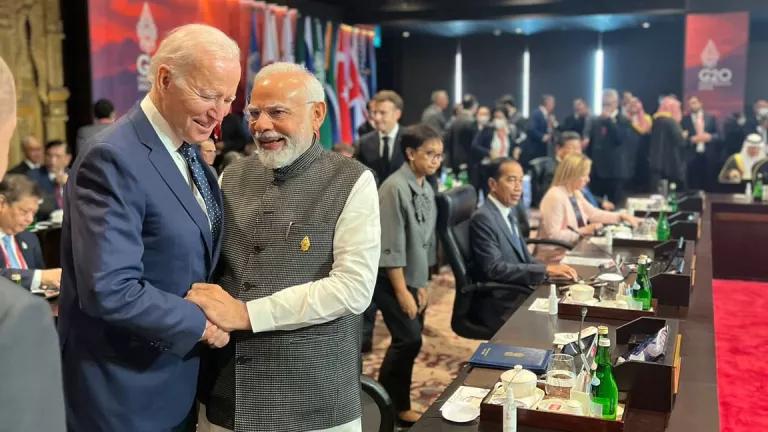After 25 Years of Success, How India Can Inspire Global Cooperation on Further Protecting the Ozone Layer and Climate
In the wake of superstorms and flood wreckage across communities in the United States, India, Vietnam, and elsewhere, diplomats are meeting in Geneva this week to discuss action under the Montreal Protocol. Marking its 25th anniversary, international cooperation under the Montreal Protocol has effectively phased out ozone-depleting chemicals, protecting both the ozone layer and the climate, saving millions of lives, and avoiding destruction of agricultural and natural ecosystems. Global leadership, including India’s success story, proved essential in the international effort to reverse the “ozone hole.”
Twenty-five years later, the international community faces a new challenge – the super greenhouse gases known as hydrofluorocarbons (HFCs), which are growing rapidly as replacements for some uses of the ozone-depleting chlorofluorocarbons (CFCs). The warming effect of HFCs is thousands of times higher, pound for pound, than carbon dioxide.
Four partners – the Council on Energy, Environment and Water (CEEW), the Natural Resources Defense Council (NRDC), the Institute for Governance & Sustainable Development (IGSD), and The Energy and Resource Institute (TERI) – in consultation with the Confederation of Indian Industries (CII), the Refrigeration and Air-Conditioning Manufacturers Association (RAMA) and the Society of Indian Automobile Manufacturers (SIAM), have issued a preliminary review of the business case for leapfrogging or phasing down the use of HFCs in room and vehicle air conditioners in India’s fast-growing markets. Our initial paper, “Cooling India with Less Warming: The Business Case for Phasing-Down HFCs in Room and Vehicle Air Conditioners,” discusses the growing demand for room and mobile air conditioners in India and how international markets are shifting to ozone-safe, climate-friendly, and energy efficient refrigerants. We also address the opportunity for leapfrogging air-conditioning technology and the potential policies for supporting market transformation and an HFC phase-down.
Because the Montreal Protocol requires that replacements be safe and allows for the control of emissions, much more needs to be done, including the phase-down of HFCs. India’s leadership in the first 25 years of the Montreal Protocol provides an instructive roadmap to transform domestic industries to cleaner and safer technologies. India’s leadership was essential to the success of the global CFC phase-out. Remarkably, India completed the phase-out of CFC production and consumption by 2008, more than a year and a half ahead of schedule! India also phased out halons nearly ten years before the agreed deadline in 2003.
To achieve its CFC phase-out, Indian government leaders created a comprehensive national regulatory framework and a robust private-sector engagement to ensure a smooth market transition for post-CFC compounds. India’s many policies to support market transformation included:
- creating a government-industry monitoring program
- securing technology transfers through cooperative agreements with developed country signatories to the Montreal Protocol
- developing industry phase-out strategies with the World Bank and the United Nations Environment Program
- convening state workshops held to raise awareness within industry of CFC phase-out
- establishing a support network focused on small and medium enterprises (SMEs) offering assistance for implementation
- providing financial incentives to bolster the development of new technology and discouraging the re-financing of outdated technology
Through accessing the Montreal Protocol Multilateral Fund and bilateral funds, engaging industry stakeholders early on, and establishing regulations and providing firms with technology finance, India succeeded in rapidly phasing out CFCs “with least impact on industrial sectors” and “without undue industrial dislocation and obsolescence and minimum cost to the consumers,” according to the Ozone Cell, Ministry of Environment and Forests, Government of India. Indian industry has also applauded the Indian government for its leadership in the CFC phase-out.
Twenty-five years later, after the Montreal Protocol was agreed, India is presented with a new opportunity to lead and engage with domestic industry and international counterparts to phase down dangerous HFCs. Momentum for an HFC phase-down is coming partly from real world energy concerns. With a booming economy, increasing disposable income, and high temperatures, air-conditioning is rapidly increasing in India. Air-conditioners account for a staggering 40 to 60 percent of peak electricity demand during the summer months in many Indian cities. Leading Indian air-conditioning manufacturers are actively exploring energy-efficient alternatives to HFCs while advancing their international competitive market share.
India could motivate its industry to lead a technological innovation process by supporting an accelerated global HFC phase-down under the Montreal Protocol, as discussed in our new paper. India’s success story with the CFC phase-out provides a roadmap to transitioning HFC-dependent industries to safer and more marketable refrigerants. As a global leader, India plays an essential role at the Montreal Protocol discussions in designing international cooperation in the orderly shift from HFCs to reduce these extremely potent greenhouse gases while maintaining momentum as a clean technology leader.
(Co-authored by Elaina DeMeyere)



